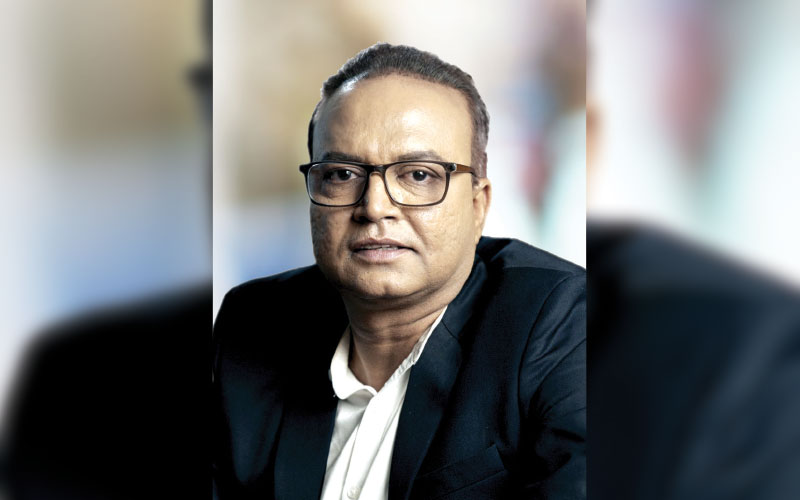Orbit Cables is designing advanced solar cables to meet evolving green energy requirements of the country. In an exclusive interview with Wire & Cable India, Mr. Amit Agarwal, Chairman of Orbit Cables, shared how the company’s solar cables have undergone over 20,000 hours of rigorous testing, enduring stresses like prolonged water immersion, mechanical strain, and harsh weather to mirror real-world conditions. He stated that to demonstrate and control the quality assurance system for solar cables, they have incorporated a four-tier documentation system that includes work instructions, manuals, records, and national and international standards.

Wire & Cable India: As India increasingly adopts 1.5 kV DC system architecture in large-scale solar installations to reduce BOS costs and improve system efficiency, how has your company adapted its solar cable design, especially in terms of insulation, thermal performance, and long-term reliability?
Amit Agarwal: Orbit Cables plays a pivotal role in critical infrastructure projects and actively contributes to the renewable energy sector. The company is designing advanced solar cables to meet evolving green energy requirements, marking its beginning in the broader vision to develop and launch cutting-edge green technologies in the wire and cable industry.
When it comes to solar cables, Orbit Cables has already integrated and installed the necessary capabilities within its design and processing operations. Due to its enhanced manufacturing setup and refined processing methods, the company has been awarded the prestigious BIS certification.
Orbit Cables stands as a testament to India’s growing prowess in green technologies. The company is well-positioned to meet the evolving demands of both domestic and international markets. As it continues to invest in advanced capabilities—particularly in the renewable energy space, Orbit Cables reaffirms its commitment to quality, innovation, and contributing to a more sustainable future.
Watch: Top Cable Companies in India
WCI: What role does electron beam (e-beam) cross-linking technology play in your solar cable manufacturing, and how does it compare to conventional cross-linking methods in terms of performance and cost-efficiency?
AA: E-beam cross-linking is an essential part of the curing process for cables, specifically for solar cables which need to be exposed to atmospheric conditions throughout their life span. E-beam cross-linking stabilizes the compound, increases its longevity and improves its performance over a prolonged period of time.
WCI: With floating solar and hybrid solar-plus-storage systems on the rise, how are your cables engineered to handle environmental extremes like water submersion, high UV exposure, or EMI interference?
AA: Our cables have been type tested for endurance over a period of 20,000 hours. During the testing period the cables are subjected to various extreme stresses which they may encounter during their course of usage, such as immersion in water over a long period of time, mechanical stresses, extreme weather conditions etc. The standard and specification under which these cables are manufactured, incorporates all such tests, to ensure that a product of suitable quality is manufactured.

It is high time that government agencies or private manufacturers should step-in to manufacture e-beam accelerators in the country. This would decrease the cost of investment for the manufacturers as well as the gestation period for setting up the plant.
WCI: Can you walk us through your quality assurance processes, especially with respect to BIS compliance, fire safety, and lifecycle testing under IS or IEC standards?
AA: Our quality assurance process starts from acquiring the relevant standards and comprehending the true and essential meaning and purpose of the tests and requirements given therein.
First and foremost is the selection of raw materials which are of reputable quality and having acceptable credentials in the industry. Secondly, in-house testing of raw materials to ascertain the actual quality of the products plays an important role in the quality assurance process.
Next is the development of plant standards to ensure proper processing of raw materials at every stage of manufacturing and processing. Some observations are done online using non-interference techniques while certain measurements are done manually.
Once the product is manufactured, it is subjected to rigorous testing as per the requirements of the relevant standard which consist of routine testing which is done of every millimeter of cable manufactured. Then from each size, one sample is subjected to type testing which involves long duration and endurance testing.
Finally, before despatch of material, acceptance testing of the lot is conducted, either by self or by the client. To demonstrate and control our quality assurance system, we have incorporated a four-tier documentation system. The first tier is work instructions, second is manuals, third is records and fourth is national and international standards.
WCI: What raw material trends are you observing, particularly in conductor metals and insulation compounds? How are you balancing performance with price volatility?
AA: Raw materials used in cable manufacturing are perhaps the most volatile in nature when it comes to their pricing. Various factors affect the pricing and availability of raw material on a regular basis. Generally, speculative buying is used to counter this volatility, and stocks are maintained accordingly.

E-beam cross-linking is an essential part of the curing process for cables, specifically for solar cables which need to be exposed to atmospheric conditions throughout their life span.
WCI: Are you seeing increased traction from global EPCs or exports for Indian-made solar cables? If yes, what benchmarks or certifications are most demanded internationally?
AA: This is perhaps the most interesting phase for the Indian cable industry. There was a time when Indian cables were not able to compete with the international markets. However, with the metal pricing being made compatible with London Metal Exchange (LME), and other government policies have helped Indian manufacturers to compete in the international market at par with international competition.
Most of the certifications are now common since they are mainly governed by the International Electrotechnical Commission (IEC). Individual countries tropicalize the standards according to the requirements of their particular environment and region. However, most of the products manufactured are compatible with all international standards.
Also Read: Sterlite Electric to Unveil a New Facility in Vadodara, Plans to Introduce 400 kV HVDC & HVAC Cables
WCI: What are the key challenges solar cable manufacturers in India face today; whether it’s certification costs, skilled workforce shortages, or price-driven procurement? How are you tackling them?
AA: Major challenges in solar cable manufacturing are from unorganized sector manufacturers who misguide and dole out sub-standard material without any control from the certification and standards body. Secondly, there are a lot of checks and controls from the government in installing an e-beam accelerator. It practically takes two years or more to procure and install the e-beam system. Certification cost is another major factor considering the high testing charges involved in third party testing.
The above-mentioned issues can be tackled with planning and some forward thinking. Certification cost is a one time expense and it is the best way to judge your own capacity and capability and get the certification for the highest/ largest size you plan to manufacture. E-beam operators and safety officers are not easily available, but can be trained from approved institutions. Pricing is a challenge which is common to all cable manufacturers but every manufacturer has a way to get around it.
WCI: Finally, how is India’s solar cable manufacturing, especially in terms of material technology, certifications, and testing infrastructure, as compared with global benchmarks like those followed in Europe, the U.S., or East Asia? What areas still need improvement for India to become a global supply hub?
AA: India’s manufacturing capability is at par with the technology available across the globe. We feel that it is high time that government agencies or private manufacturers should step-in to manufacture e-beam accelerators in the country. This would decrease the cost of investment for the manufacturers as well as the gestation period for setting up the plant.

Metal pricing being compatible with London Metal Exchange (LME), and other government policies have helped Indian manufacturers to compete with the international market and be at par with international competition.




